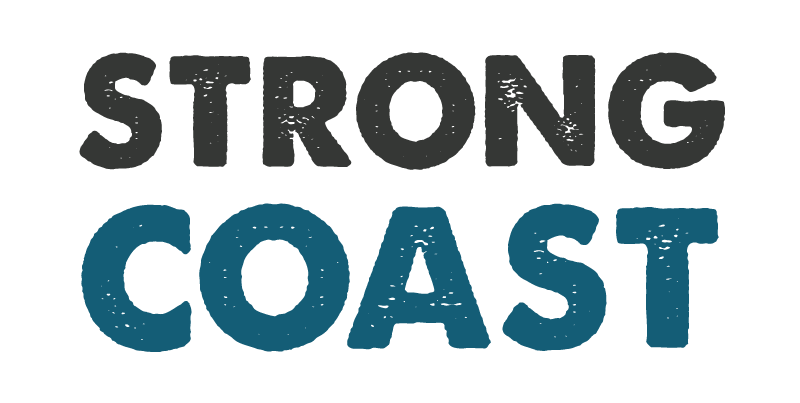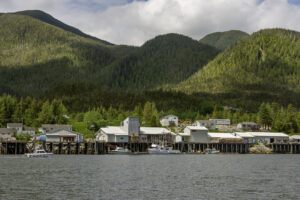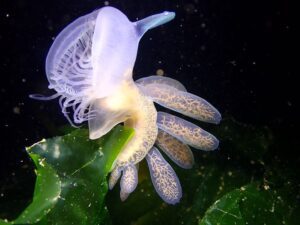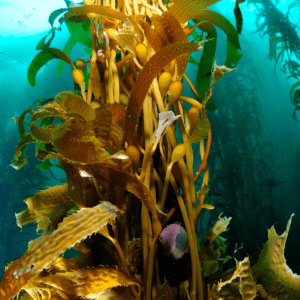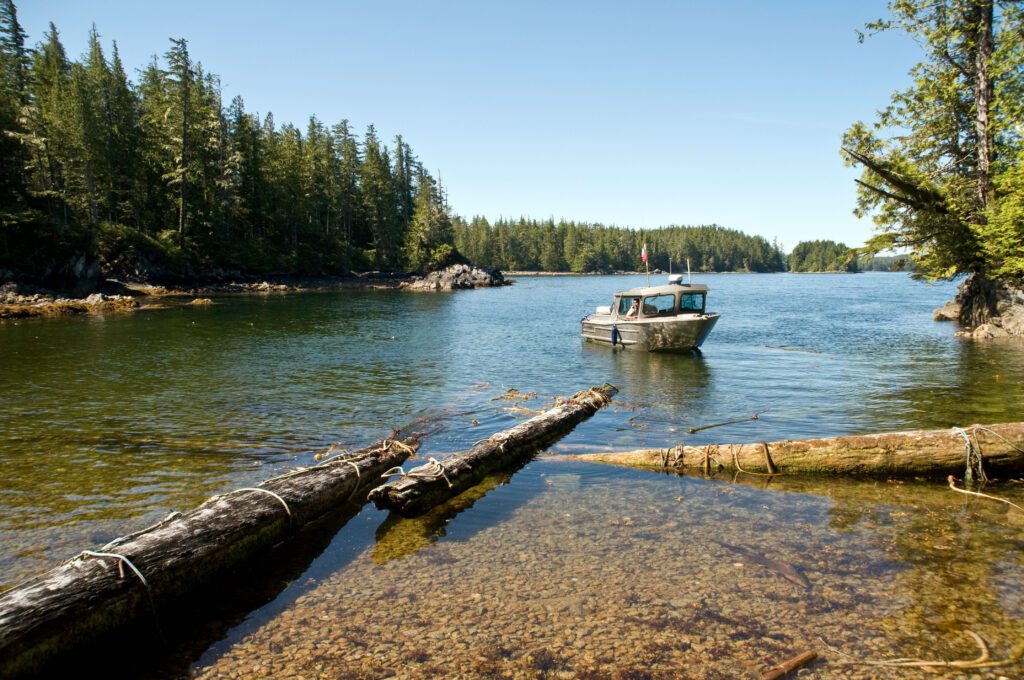
Marine Protected Areas (MPAs) are designated areas of the ocean, and coastal regions managed to protect marine ecosystems, habitats, and species while enhancing local and regional fishing stocks, maintaining cultural values, and augmenting coastal community food and economic security. MPAs can cover a wide range of marine ecosystems, from kelp forests, ancient sponge reefs, and seagrass beds to open ocean waters. These areas can vary in size but are often large and encompass an array of plant and animal species.
According to the OECD, marine protected areas are “any defined area within or adjacent to the marine environment which has been reserved by legislation or other effective means so that its marine and/or coastal biodiversity enjoys a higher level of protection than its surroundings.”
MPA Network BC Northern Shelf defines a marine protected area as “A clearly defined geographical space recognized, dedicated and managed, through legal or other effective means, to achieve the long-term conservation of nature with associated ecosystem services and cultural values.”
Marine Protected Areas Protect Biodiversity
Marine protected areas protect biodiversity through conservation efforts to prevent overfishing, habitat destruction, pollution, and destructive fishing practices. Therefore, they limit or prohibit activities such as industrial fishing, harvesting marine organisms, anchoring boats, discharging wastewater or hazardous materials into the sea, and trawling within their boundaries.
Marine Protected Areas also help maintain a healthy balance between human activities that involve using the ocean’s resources for economic reasons, such as local fisheries, and the ecological needs of the environment. Today, more than 15% of global waters have some form of marine protected area designation, and they play an essential role in conserving marine environments worldwide. The protection that MPAs provide commercially valuable species allows these species to bolster their populations, resulting in sustainable fisheries and prosperous coastal communities for generations to come.
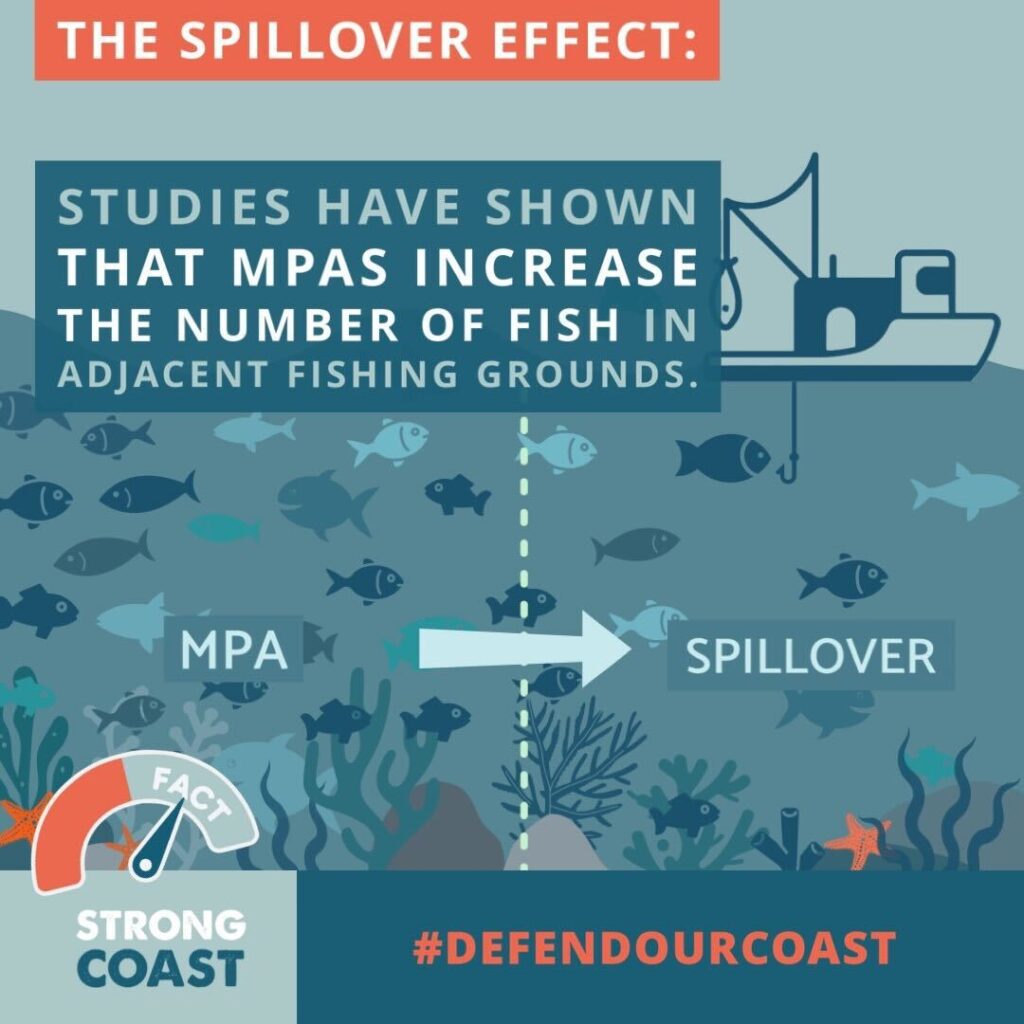
What are Marine Protected Area Networks?
A marine protected area network is a collection of individually delineated MPAs. Combining MPAs in an MPA network is more effective in protecting marine ecosystems than isolated MPAs. An MPA network amplifies the effectiveness of individual MPAs through connectivity, redundancy, and the replication of protected habitats. Put simply, an MPA network provides more areas for marine species to thrive.
Compared to stand-alone marine protected areas, MPA networks encompass a greater diversity of habitats and provide enhanced protection by shielding similar habitats and species across a spatial scale far exceeding that of a single MPA. A well-managed MPA network can protect a single species’ spawning sites, feeding grounds, and adult habitats, which a stand-alone MPA cannot do.
MPA Network BC Northern Shelf defines a marine protected area network as “a collection of individual marine protected areas that operates cooperatively and synergistically, at various spatial scales, and with a range of protection levels, to fulfill ecological aims more effectively and comprehensively than individual sites could alone.”
Strong scientific evidence illustrates that marine protected area networks can reverse ecological decline and help rebuild thriving marine ecosystems and the coastal economies depending on them. The main advantage that a well-managed MPA network has over a single MPA is representativity, as networks include a full range of ecosystems, habitats, biodiversity, ecological processes, and environmental gradients.
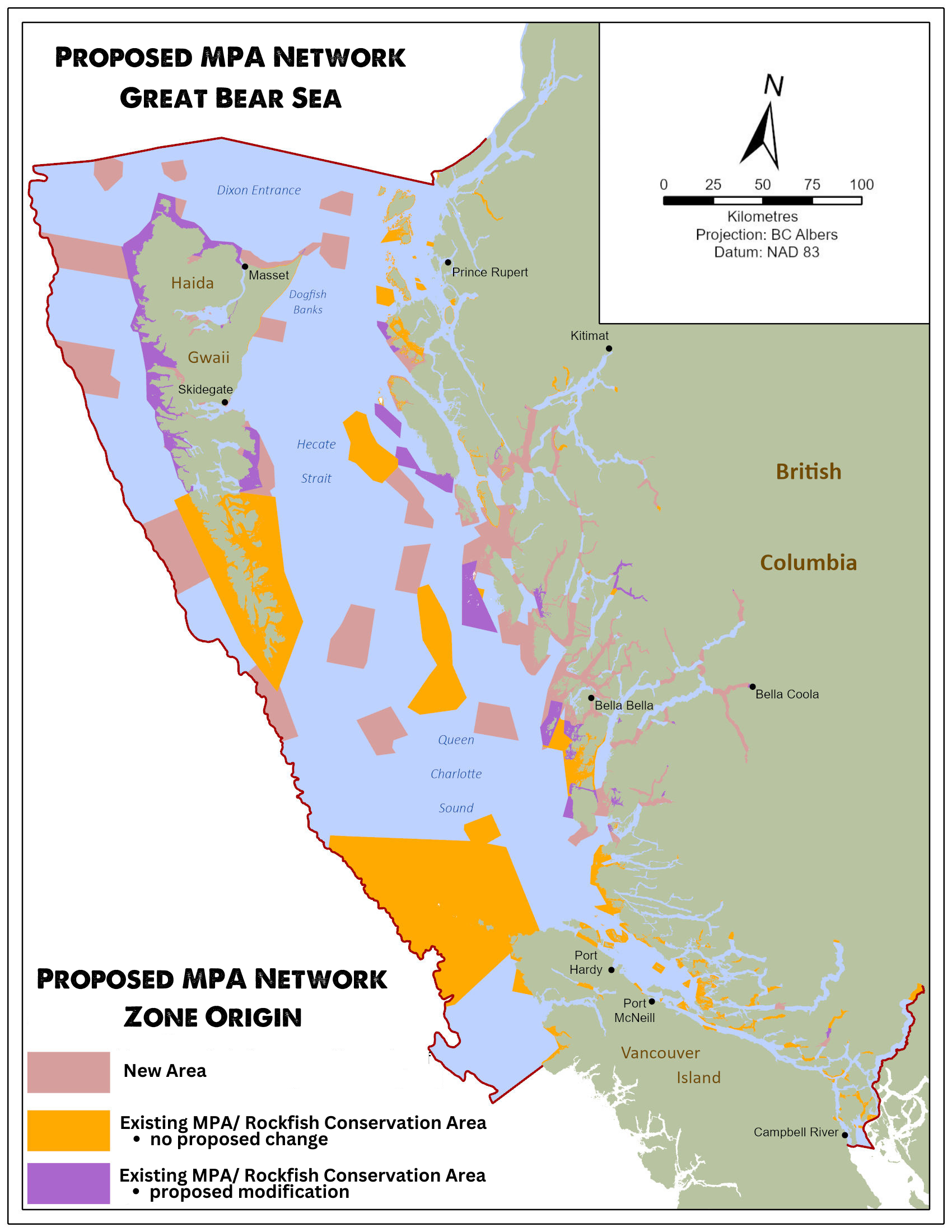
What Makes Marine Protected Areas and MPA Networks Successful?
The most successful marine protected areas have comprehensive management plans that involve science-based assessments and proper enforcement by local governments to ensure compliance with regulations. The most successful MPAs also heavily involve local communities, as comprehensive management and enforcement are only possible with significant local involvement. According to the Food and Agricultural Organisation of the United Nations, “If an MPA is planned and implemented without involving the coastal communities and resource users concerned, and without considering their situations and needs, there is a risk of failure.”
Well-managed marine protected areas increase the overall health, productivity, and sustainability of ecosystems by creating permanent protection for fish, marine life, and animal habitats. Moreover, numerous studies show that well-managed MPAs enhance the economic well-being of coastal communities. However, this can only happen when marine resources are in the hands of local communities and not controlled by foreign money and large corporations, such as Canfisco.
On the BC Coast, this means ending corporate control of fisheries by exploiting the individual transfer quota (ITQ) system, which allows companies like Canfisco to purchase quotas and fishing licenses from other fishermen, essentially giving them control of the fishery. This creates an uneven playing field for owner-operators, who cannot afford to purchase quotas and licenses. The ITQ system on our coast also allows for industry consolidation, with larger companies like Canfisco acquiring more and more of the licenses and quotas, further squeezing out smaller players. Coastal communities thrive when a system that supports owner-operators is in place. The environmental and economic goals of marine protected areas coincide with the needs of owner-operators and coastal communities and not with industrial fishing.
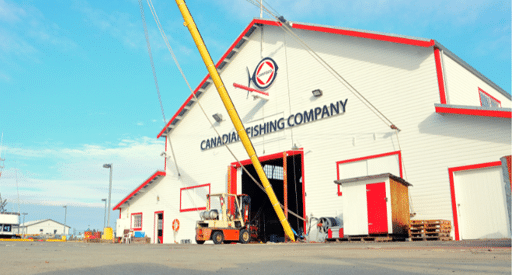
The Benefits of Marine Protected Areas and MPA Networks
In addition to providing direct protection for species from exploitation by humans, marine protected areas can also provide other benefits, such as improved water quality due to reduced runoff into the sea from land-based sources; increased sediment retention, which leads to enhanced water clarity; increased fish biomass due to spawning aggregation sites being established; enhanced food security by providing sustainable fisheries yields; improved connectivity between ecosystems, which helps enhance genetic diversity; educational opportunities for students and scientists; and increased recreational opportunities for local communities.
Another critical benefit of marine protected areas and MPA networks is spillover. An OECD meta-analysis found that one of the main benefits of MPAs is the “transfer of benefits to fishing areas through adult spillover and larval export.” Studies have revealed that the increased catch rate of resident species in fishing grounds adjacent to MPAs can be as high as 245%, which more than makes up for the decrease in fishing grounds. Due to the increase in fish biomass in MPAs, this increased catch is sustainable. A recent study on the world’s largest fully protected MPA, Papahānaumokuākea Marine National Monument in Hawaii, found that the catch rates for the migratory yellowfin tuna increased by 54% in adjacent fishing grounds. This finding reveals that MPAs also increase stock numbers of migratory fish, which shows the potential for an MPA network on our coast to help our struggling salmon populations.
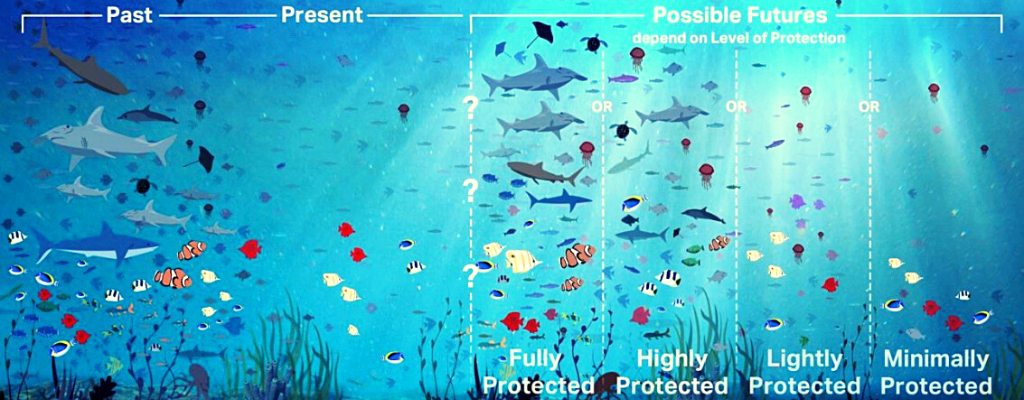
However, spillover benefits must go to coastal communities, not foreign interests and corporations. Therefore, one essential component of successful marine protected area networks is ensuring that coastal communities control marine resources. The result will be thriving, sustainable fisheries and prosperous coastal communities.
How Do Marine Protected Areas Work?
Marine protected areas and MPA Networks use zones to help define specific areas for conservation. Existing MPAs often contain multiple zones, and individual zones will typically have specific conservation objectives (and associated management direction) that distinguish them from adjacent zones.
Within the Great Bear Sea Marine Protected Area Network, different MPAs come together to target specific habitats, feeding and nursery grounds, and species found in their respective areas. For instance, the Rennell to Kitgoro Group of MPAs contains transient killer whale habitats of special importance, leatherback sea turtle important areas, seabird important areas, moulting grounds for sea ducks, nesting sites for black oystercatchers, pigeon guillemot breeding colonies, and more.
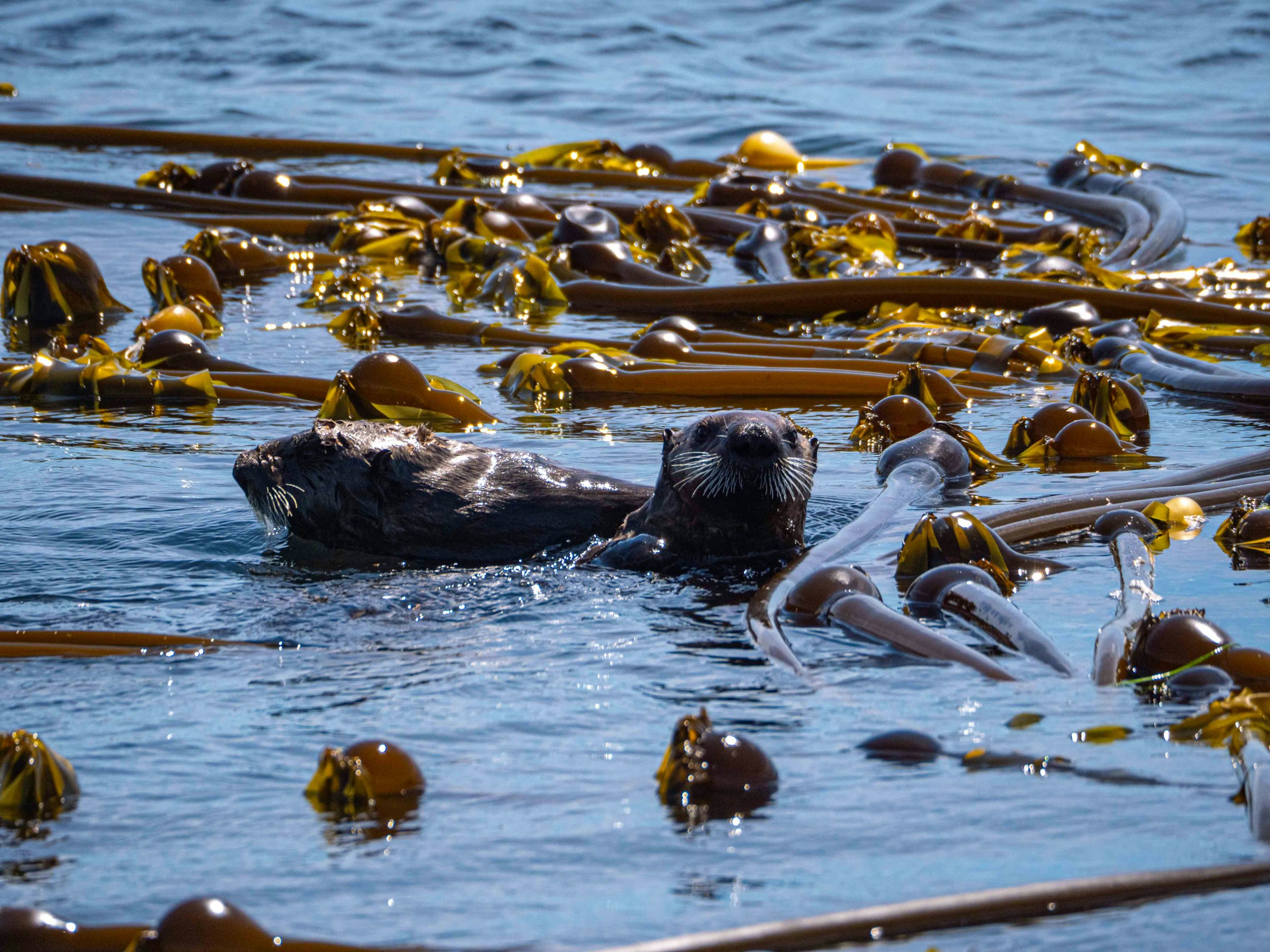
Meanwhile, the Offshore Haida Gwaii Marine Protected Area will look to protect – in addition to other habitats and areas – Celestial Reef and shelf hotspots, which consist not only of fish species like rockfish (Shortspine Thornyhead, Rougheye/Blackspotted, Darkblotched) or whale species like Northern Resident Killer Whales, Blue, Fin), but also corals and sponges.
These “hotspots” are diverse, and each area has a unique grouping, but there are general principles that help planners identify what needs protecting. Marine protected areas typically look for habitats critical to lifecycle stages such as spawning, juvenile rearing, and feeding, as well as adjacent terrestrial areas for anadromous species like salmon.
When these protected areas are managed well, the result is an increase in fish numbers both inside the protected areas and in nearby fishing grounds. Therefore, Marine protected areas are essential for sustainable fisheries and a thriving coastal economy.
Marine protected areas and the Future of British Columbia
Marine protected areas can address pressing environmental and conservation challenges while uplifting local communities and economies. The benefits of MPAs will be significant for BC’s waters, as the province’s diverse marine ecosystems are home to a wide range of marine species, many of which are commercially essential but face threats from industrial overfishing, habitat degradation, pollution, and climate change.
By establishing marine protected areas, BC can safeguard important spawning and nursery grounds, conserve fragile ecosystems, and promote sustainable fisheries while mitigating the impact of human activities on marine life, ultimately contributing to the overall health and sustainability of our coastal and ocean ecosystems and economies.
